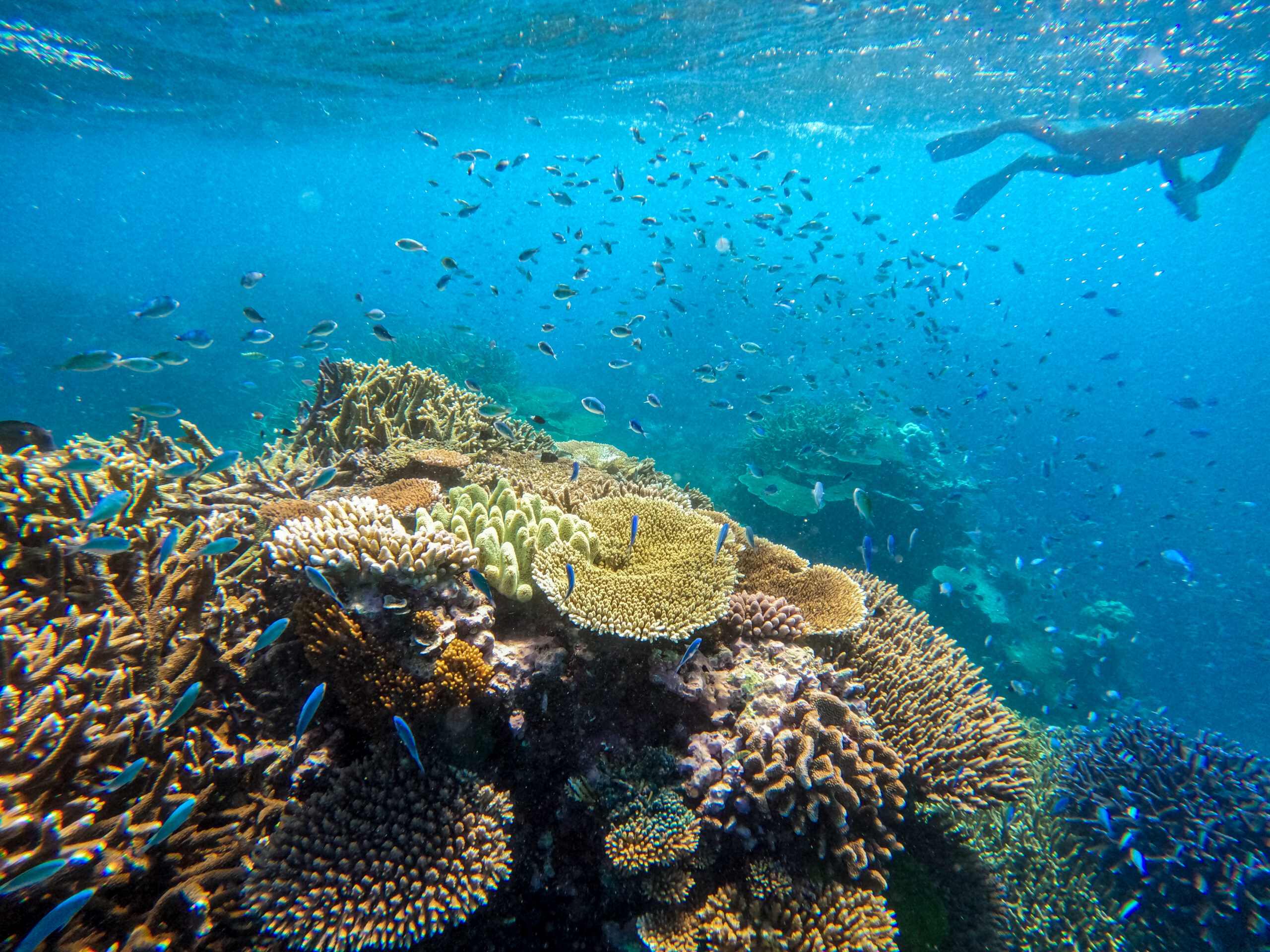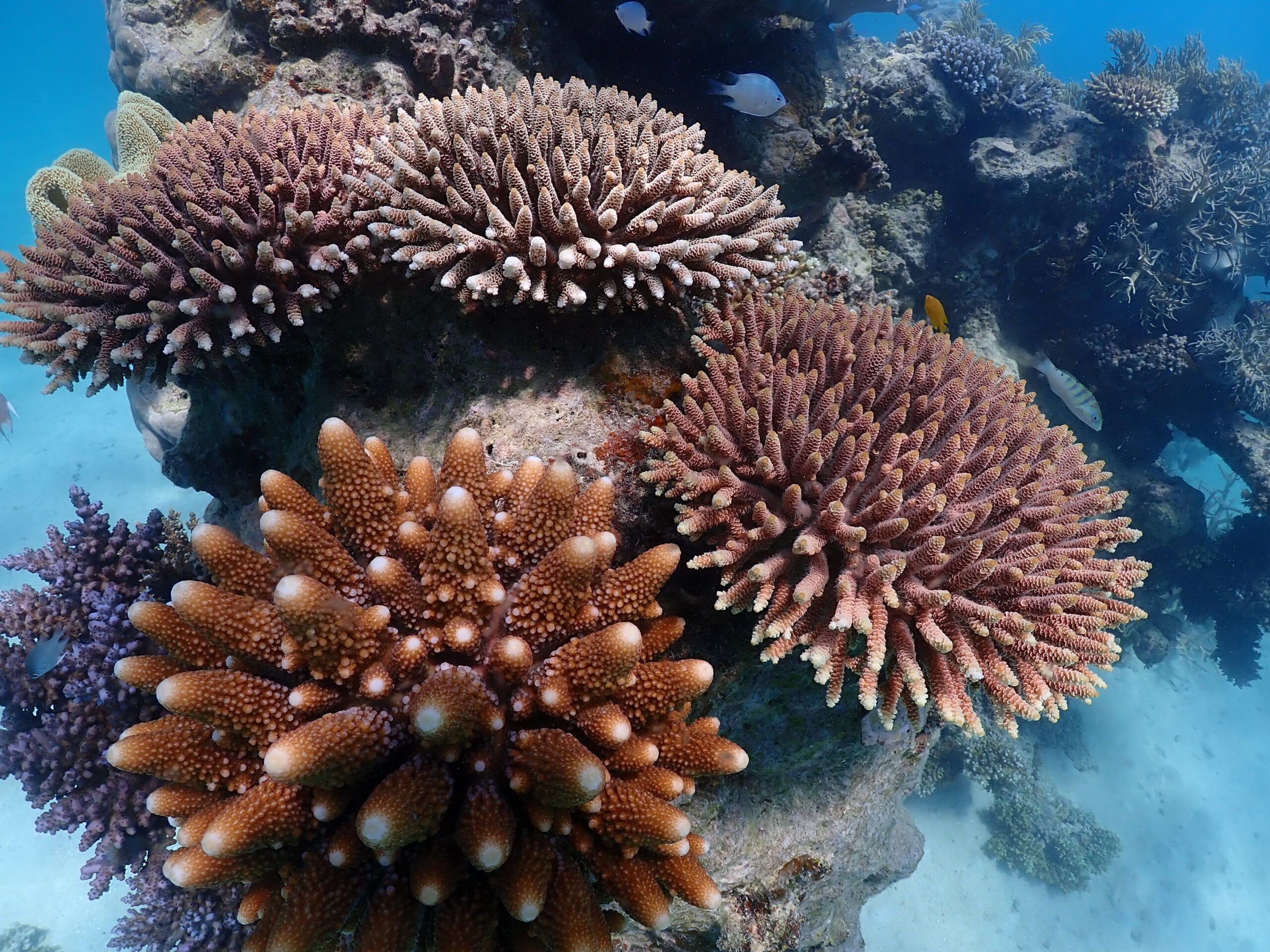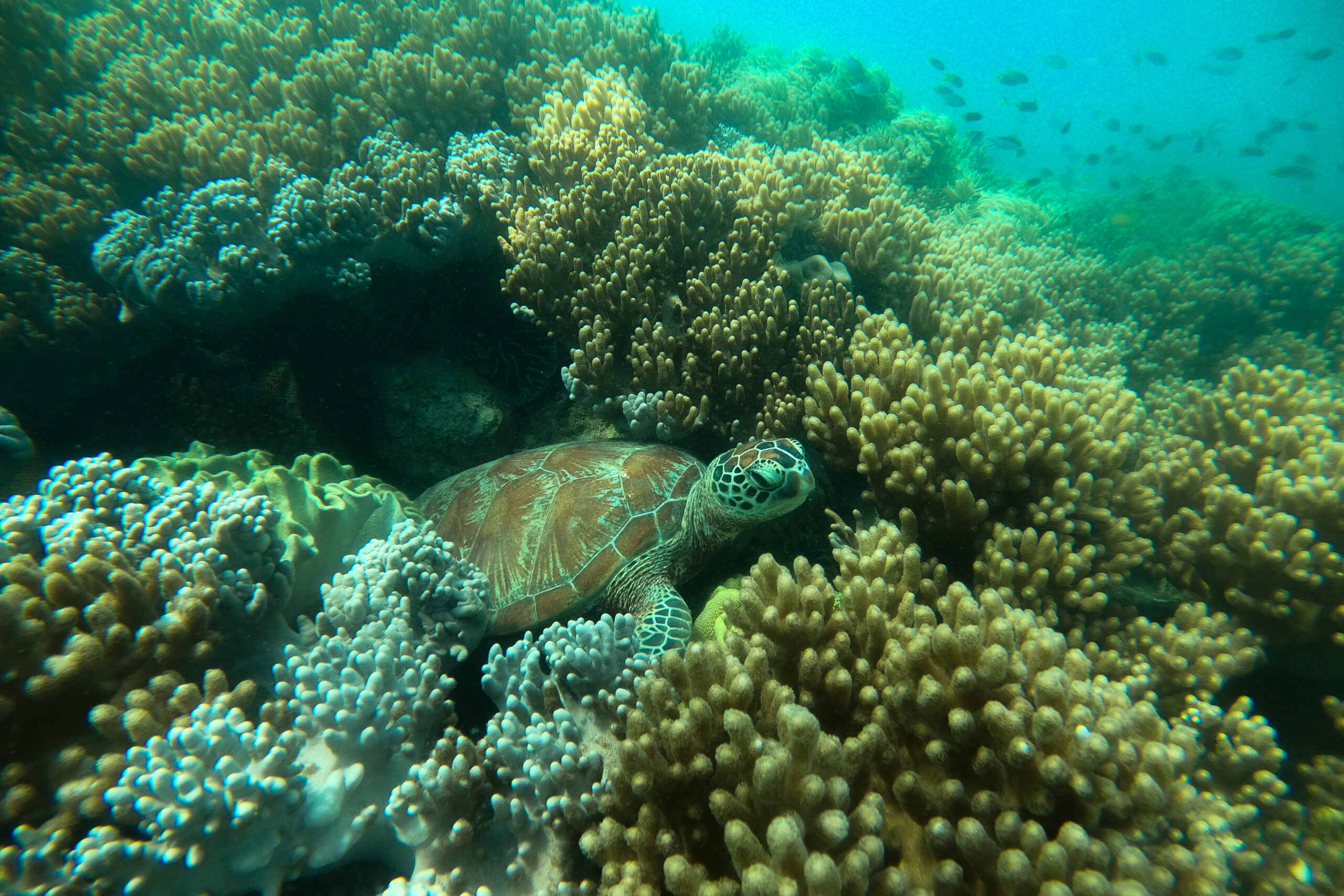If you’re a snorkeller, diver, swimmer or avid boatie, you’re no stranger to the beauty of the Great Barrier Reef. Named one of the seven natural wonders of the world, it draws people from every corner of the globe; each hoping to catch a glimpse of its vast, colourful, living seascape.
Even from above the water, you can see a patchwork of colour and movement. Fish flicker between coral outcrops. Sea turtles cruise past bommies. You may even see a ray or two. Below the surface, a network of coral structures stretches in all directions – some soft and flowing with the current, others rigid, branching, and built like underwater architecture. The beauty is awe-inspiring, but to the trained eye, there’s also a story about the reef unfolding.
That subtle difference between the flexible, fabric-like corals and their solid, stone-like neighbours reveals more than just variation. It can reveal insights about the underlying health and resilience of the reef itself.

Hard corals form skeletons, which in turn form the backbone of the Great Barrier Reef. These reef-building species have skeletons, and therefore as they grow, they slowly deposit calcium carbonate creating solid structures that serve as the reef’s foundation. Whether branching like staghorn, dome-shaped like brain coral, or flat and plate-like, hard corals create the three-dimensional framework that supports entire reef communities.
This complex structure is a large part of what gives coral reefs their function. It provides homes, breeding grounds, and shelter for thousands of marine species, ranging from tiny invertebrates to reef fish, sharks, and rays. Hard corals also help absorb wave energy, playing a vital role in protecting coastlines against extreme weather events and maintaining coastal ecosystems.

In contrast, soft corals serve a different purpose. Lacking a hard skeleton, they appear more flexible and often resemble underwater plants or fans. Often these are the corals you will see swaying in the current. Soft corals also provide habitat and contribute to biodiversity but don’t form the reef’s structure.

As Cass Hayward, Reef Catchments Great Barrier Reef Team Manager, puts it:
“Both soft and hard corals have roles in the ecosystem, but it’s really the hard corals that we have to thank for building the reef’s structure over thousands and millions of years.”
The Great Barrier Reef (GBR) is the largest coral reef system on Earth, spanning more than 2,300 kilometres. It’s so vast it can be seen from space. It’s also recognised as a UNESCO World Heritage Site for its outstanding universal value; environmentally, culturally, and economically.
Coral reefs like the GBR support around 25% of all marine life despite covering less than 1% of the ocean floor. They also provide vital coastal protection against extreme weather events, support fisheries, attract tourism, and play a key role in nutrient cycling. And hard corals are at the centre of it all.
“When scientists and reef managers check on how the reef is doing, they usually start by looking at the hard coral. If there’s high cover and diversity of hard corals, it is an indicator of good reef health and resilience. If we see declines in hard coral, which can often be accompanied by an increase in soft coral, it can be a warning sign often related to things like poorer water quality, too much sediment or nutrients, or ongoing stress.” – Cass Hayward.
Across the reef, researchers, Traditional Owners, tourism operators and community members are researching and trialling ways to actively assist coral recovery. Programs like the Coral Nurture Program research and optimise reef restoration methods that centre around growing and reattaching coral fragments within degraded reef areas, while Boats4Corals examines the potential for transplanting coral larvae to sites that need a helping hand in recovery.
These targeted efforts are designed to give hard corals a head start, helping rebuild structure, restore habitat, and maintain the reef’s natural resilience.

Coral Nurture Program and Boats4Corals are part of the Whitsunday Reef Islands Initiative. The Reef Islands Initiative is a Great Barrier Reef Foundation program, supported by funding from Lendlease, the Australian Government’s Reef Trust, the Queensland Government and the Fitzgerald Family Foundation.